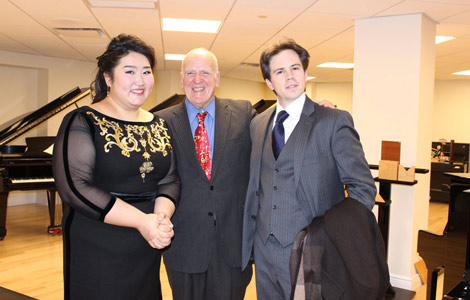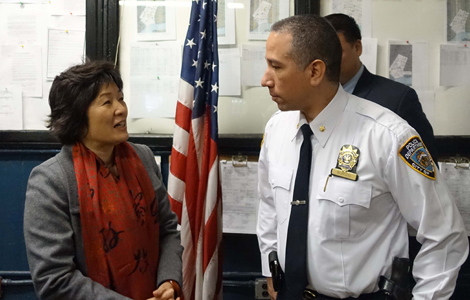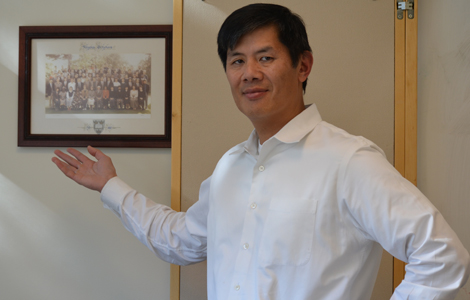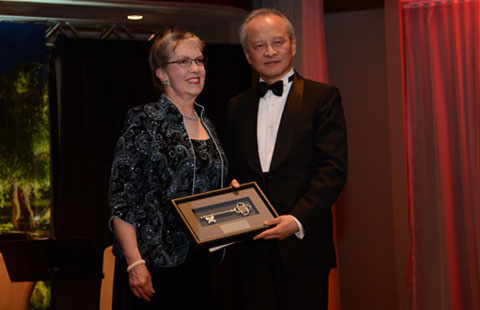Turning the tables on drug-resistant elusive killers
Updated: 2014-09-24 05:32
By Chris Davis(China Daily USA)
|
||||||||
Superbugs is a nickname that's probably too playful for the subject it covers.
It refers to new strains of bacteria that have evolved to become untreatable with any existing drugs, immune to the antibiotics that have been one of the pillars of modern medicine and allowed us all to survive infections that used to kill.
In the US alone, each year these uberbugs infect more than 2 million people and kill at least 23,000.

Globally, the World Health Organization called antibiotic resistance a serious threat that is "no longer a prediction for the future, it is happening right now in every region of the world and has the potential to affect anyone, of any age, in any country".
"Without urgent, coordinated action by many stakeholders, the world is headed for a post-antibiotic era, in which common infections and minor injuries which have been treatable for decades can once again kill," said Dr Keiji Fukuda, WHO's assistant director general for health security.
In the race against superbugs' Darwinian evasion, however, scientists have come up with few new kinds of antibiotics that are effective against scourges such as drug-resistant tuberculosis and staphylococcus or untreatable gonorrhea. But maybe there's another way.
Enter Timothy Lu, associate professor of biological and electrical engineering at MIT. Lu was born in the US and at 10 moved back to his family home in Taiwan where he spent his adolescence before going to MIT and Harvard.
Lu and his team report in the latest issue of Nature Biotechnology two new ways to turn the tables on superbugs.
"Antibiotic resistance is going up and at the same time we aren't finding very many new antibiotics to treat the problem," Lu said.
The primary issue, he said, is that antibiotics are like "a very blunt sword". In many cases when someone has an infection, there is only one type of bacteria that is causing the disease, but there are many billions and trillions of good bacteria living inside of us.
"So when we take antibiotics, we're kind of blasting everybody, when we're only trying to kill that one guy," he said. That in turn leads to risks of increasing resistance or other infections where other bad bacteria grow in the absence of the good.
Lu and his team took a different approach. "We developed a method that allows you to very selectively and efficiently kill bacteria that basically contain bad genes, and only those," he said.
The technique is called "gene editing" and it could change more than just the battle against superbugs. Lu said he thinks of DNA as "the software of life", the genes in our body — or in bacteria — determine how everything functions. Everything follows its genetic code.
"What's been really difficult until recently has been if you want to go in and modify DNA, it's been quite challenging to do that," he said. "But recent developments in gene-editing allow us to design systems that go in and cut out genes you don't want or change a gene into another gene. Basically you can read and write DNA much more efficiently than you could before".
DNA is like a very long piece of tape and we have the ability now to go in and cut and replace and overwrite. The tools are molecules — proteins, or other pieces of DNA or RNA — that act like machines.
Think of it as "designer genetic editing". The tools have been developed not only for bacterial systems and yeast but also for mammalian and human cells. "It's really been a big revolution over the last few years," he said.
His team developed two gene-editing systems that sabotage superbugs by using their own immune systems, the weapons they use to protect themselves, against them. One infiltrates, snips the DNA and destroys the cell outright; the other re-codes the antibiotic resistance they've evolved so they're once again susceptible to conventional medicines.
The beauty of gene editing, he said, is that "you could theoretically design a very personalized therapy for every patient or every infection", since no two people have exactly the same kind of bacteria, and drugs affect everyone differently.
A customized therapy for each individual is also conceivable, "because we can build these things very quickly in a day or two in the lab". But that day is far off, he said, blocked by layers of regulation.
"We're kind of going back to that old concept of the silver bullet, but we're now entering an era where the ability to read and write DNA gives us the ability make silver bullets at a much more rapid pace and with much more targeting ability," he said.
They have done initial testing in larvae of moths, but obviously, he said, "we want to push this toward human use, so we're now working on larger animal experiments, like mice, and if we're successful we're hoping to use the technology in clinical and preclinical trials".
Superbugs beware.
Contact the writer at chrisdavis@chinadailyusa.com.

 Music at her fingers
Music at her fingers
 Across America Over the Week (Jan 16 - Jan 22)
Across America Over the Week (Jan 16 - Jan 22)
 Spend Chinese New Year in style
Spend Chinese New Year in style
 Ili river valley becomes a popular destination for swans
Ili river valley becomes a popular destination for swans
 Philip Ma: from scientist to businessman
Philip Ma: from scientist to businessman
 Birmingham's Spotlight on China dinner
Birmingham's Spotlight on China dinner
 How to distinguish doucai, wucai, Famille-rose and enamel porcelain
How to distinguish doucai, wucai, Famille-rose and enamel porcelain
 Xinjiang lake in bumper fishing season
Xinjiang lake in bumper fishing season
Most Viewed
Editor's Picks

|

|

|

|

|

|
Today's Top News
Houston's SW Chinatown
China to focus on reforms, opening of capital market
Slowdown brings new risks to banks
Trade group calls for BIT
Market status for China is 'political' issue
Birmingham's Spotlight on China dinner
Bank takes renminbi-clearing seriously
Traditional Garb
US Weekly

|

|







